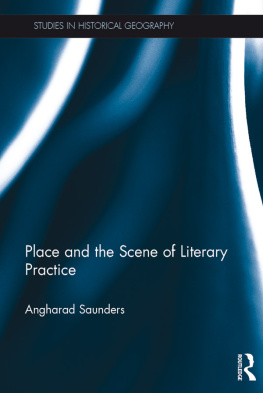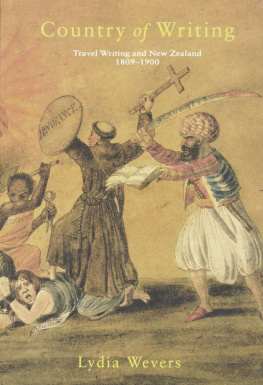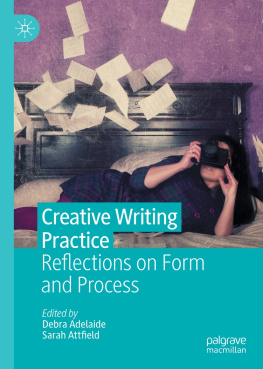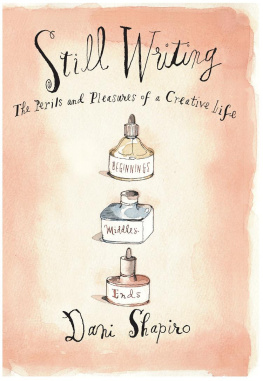Place and the Scene of Literary Practice
The act of writing is intimately bound up with the flow and eddy of a writers being-within-the-world; the everyday practices, encounters and networks of social life. Exploring the geographies of literary practice in the period 18401910, this book takes as its focus the work, or craft, of authorship, exploring novels not as objects awaiting interpretation, but as spatial processes of making meaning. As such, it is interested in literary creation not only as something that takes place - the situated nature of putting pen to paper - but simultaneously as a process that escapes such placing.
Arguing that writing is a process of longue dure, the book explores the influence of family and friends in the creative process, it draws attention to the role that travel and movement play in writing and it explores the wider commitments of authorial life, not as indicators of intertextuality, but as part of the creative process. In taking this 70-year period as its focus, this book moves beyond the traditional periodisations that have characterised literary studies, such as the Victorian or Edwardian novel, the nineteenth-century or early twentieth-century novel or Romanticism, social realism and modernism. It argues that the literary environment was not one of watershed moments; there were continuities between writers separated by several decades or writing in different centuries. At the same time, it draws attention to a 70-year period in which the value of literary work and culture were being contested and transformed.
Place and the Scene of Literary Practice will be key reading for those working in Human Geography, particularly Cultural and Historical Geography, Literary Studies and Literary History.
Angharad Saunders is a Senior Lecturer in Human Geography at the University of South Wales, UK. Her research interests revolve around the literary and cultural geographies of the late Victorian and Edwardian period. In particular, she is interested in the relationship between writing practice, as something more than a situated undertaking, and the imaginative worlds of the novel.
Studies in Historical Geography
Series Editor: Robert Mayhew
Historical geography has consistently been at the cutting edge of scholarship and research in human geography for the last fifty years. The first generation of its practitioners, led by Clifford Darby, Carl Sauer and Vidal de la Blache presented diligent archival studies of patterns of agriculture, industry and the region through time and space. Drawing on this work, but transcending it in terms of theoretical scope and substantive concerns, historical geography has long since developed into a highly interdisciplinary field seeking to fuse the study of space and time. In doing so, it provides new perspectives and insights into fundamental issues across both the humanities and social sciences. Having radically altered and expanded its conception of the theoretical underpinnings, data sources and styles of writing through which it can practice its craft over the past twenty years, historical geography is now a pluralistic, vibrant and interdisciplinary field of scholarship. In particular, two important trends can be discerned. First, there has been a major cultural turn in historical geography which has led to a concern with representation as driving historical-geographical consciousness, leading scholars to a concern with text, interpretation and discourse rather than the more materialist concerns of their pred ecessors. Secondly, there has been a development of interdisciplinary scholarship, leading to fruitful dialogues with historians of science, art historians and literary scholars in particular which has revitalised the history of geographical thought as a realm of inquiry in historical geography. Studies in Historical Geography aims to provide a forum for the publication of scholarly work which encapsulates and furthers these developments. Aiming to attract an interdisciplinary and international authorship and audience, Studies in Historical Geography will publish theoretical, historiographical and substantive contributions meshing time, space and society.
For a full list of titles in this series, please visit https://www.routledge.com/Studies-in-Historical-Geography/book-series/ASHSER-1344
Place and the Scene of Literary Practice
Angharad Saunders
Elite Women and the Agricultural Landscape, 17001830
Briony McDonagh
Forthcoming:
Impure and Worldly Geography
Pierre Gourou and Tropicality
Gavin Bowd and Daniel Clayton
Place and the Scene of Literary Practice
Angharad Saunders

First published 2018
by Routledge
2 Park Square, Milton Park, Abingdon, Oxon OX14 4RN
and by Routledge
711 Third Avenue, New York, NY 10017
Routledge is an imprint of the Taylor & Francis Group, an informa business
2018 Angharad Saunders
The right of Angharad Saunders to be identified as author of this work has been asserted by her in accordance with sections 77 and 78 of the Copyright, Designs and Patents Act 1988.
All rights reserved. No part of this book may be reprinted or reproduced or utilised in any form or by any electronic, mechanical, or other means, now known or hereafter invented, including photocopying and recording, or in any information storage or retrieval system, without permission in writing from the publishers.
Trademark notice: Product or corporate names may be trademarks or registered trademarks, and are used only for identification and explanation without intent to infringe.
British Library Cataloguing-in-Publication Data
A catalogue record for this book is available from the British Library
Library of Congress Cataloging-in-Publication Data
Names: Saunders, Angharad, author.
Title: Place and the scene of literary practice / Angharad Saunders.
Description: Abingdon, Oxon ; New York, NY : Routledge, 2017. |
Series: Studies in historical geography | Includes bibliographical references.
Identifiers: LCCN 2016058269 | ISBN 9781472417640 (hardback) | ISBN 9781315600550 (ebook)
Subjects: LCSH: AuthorshipSociological aspects. | Geography and literature. | Place (Philosophy) in literature. | AuthorshipPhilosophy.
Classification: LCC PN151 .S28 2017 | DDC 808.02dc23
LC record available at https://lccn.loc.gov/2016058269
ISBN: 978-1-472-41764-0 (hbk)
ISBN: 978-1-315-60055-0 (ebk)
Typeset in Times New Roman
by Apex CoVantage, LLC
For my parents.
Contents
Part I
The place of writing
Part II
Writingscapes
Part III
En-route writing: Writers at work
If this book began anywhere it began many years ago in a third year undergraduate module on the Geographies of British Literature. Under the guidance and subsequent supervision of Robert Mayhew, an undergraduate interest in literary geography became a postgraduate interest and over the intervening years has morphed into this book. Alongside my thanks to Robert Mayhew for inspiring my interest in literary geography, this book would not be what it is without the encouragement and friendship of Sheila Hones and the wider community of literary geographers. Over the years there have been many others who have shaped the literary practice of this book in some way, most notably Sarah Cant, Tim Cresswell and David Cooper. I would also like to thank Priscilla Corbett for her generous support in all aspects of the editing and production of this book.










